The Creation of the Diamond Lab Grown
Your lab-grown diamond is chemically identical to every other diamond on earth. However, instead of mined diamonds, which formed underground billions of years ago, the diamond was grown under controlled laboratory conditions using sophisticated chemical synthesis methods. There are two specific approaches to creating diamonds:
Chemical Vapor Deposition (CVD)
The chemical vapor deposition (CVD) process releases carbon from the plasma. This involves superheating the hydrocarbon gas in a vacuum to a temperature of between 3,000 and 4,000°C, at which point the carbon atoms begin to separate from their molecular bonds. These atoms drop down and land on a flat wafer of previously grown synthetic diamond and grow in vertical layers. This substrate is square for jewelry applications, but the shape may vary for other applications in medicine, communications and technology.
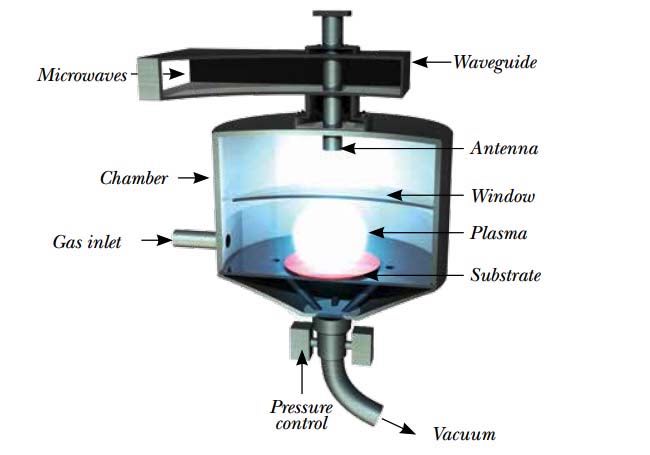
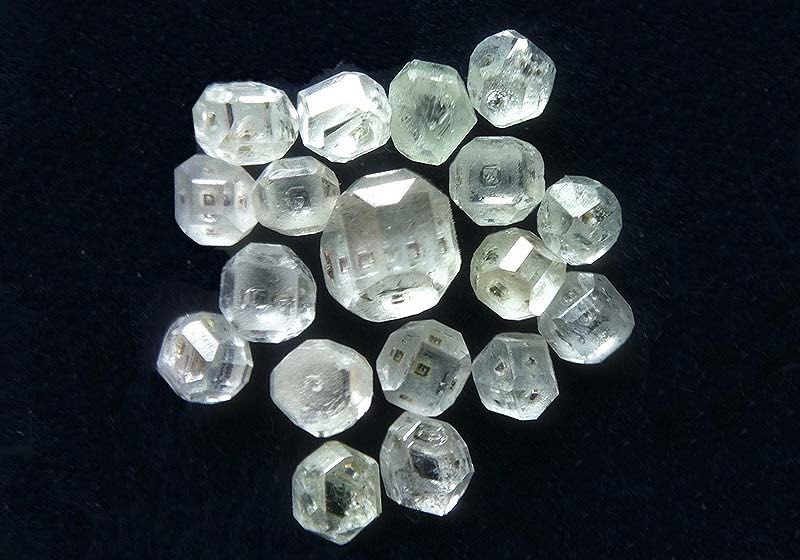
High Pressure, High Temperature (HPHT)
The HPHT (High Pressure High Temperature) process replicates the natural conditions in which diamonds formed 100 miles below the surface due to subduction. A carbon source, a diamond seed and a metal catalyst enter an octahedral cell. The cell is inserted into a huge mechanical press where the contents are heated to around 1,500 C and subjected to staggering pressure. The melting metal dissolves the carbon and the pressure causes precipitation on the diamond seed, causing a larger diamond to grow. The level of pressure from these immense presses has been compared to what you would experience if you were balancing a jumbo jet on your fingertip.
Rough to polish
Diamond cutting is the art, skill and science of transforming a rough crystal into a polished, faceted diamond. As the hardest material known to man, cutting and shaping a diamond requires specialized knowledge, tools and skills.
1) Planning: This rough octahedron crystal is studied and its growth directions and inclusions are mapped.

2) Marking: Once the plane has been determined, the glass is marked for primary sawing.
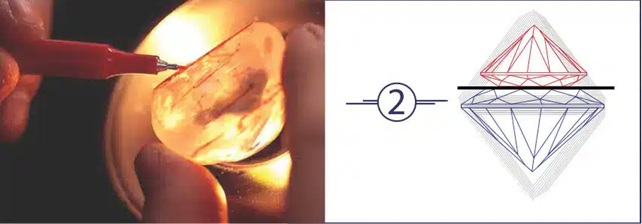
3) Sawing: A carbon fiber blade coated with diamond grit makes the first cut. It will take several hours to saw this crystal into two pieces; each of which will become a polished diamond.
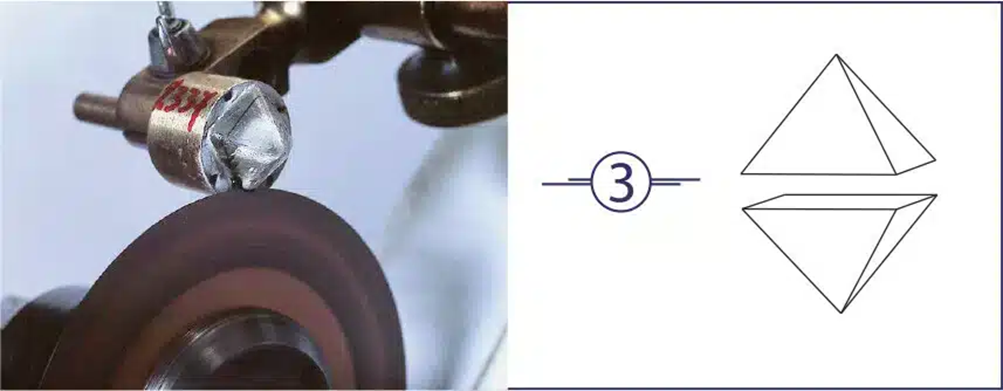
4) Bruting: The two pieces rotate in opposite directions, rubbing against each other to smooth the edges and create a round outline.
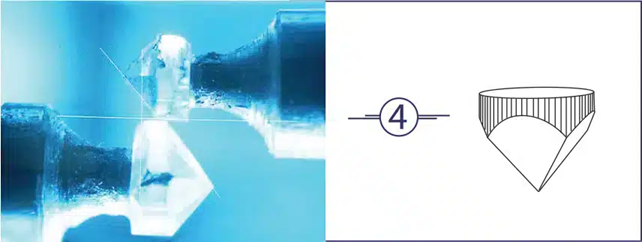
5) Polishing: A rotating wheel coated with diamond grit is used for clamping, cross-machining and polishing, the process of positioning, shaping and smoothing of all facets until final polishing.
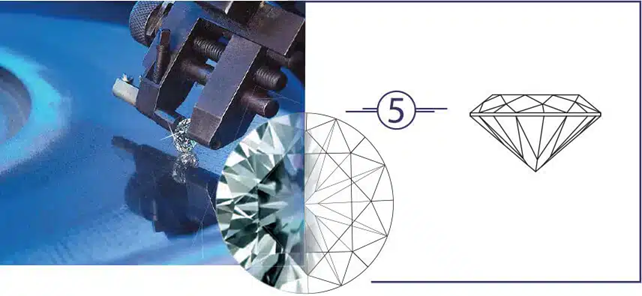
6) Inspection: Once finished, the diamond is carefully boiled in acid and examined to ensure it meets the manufacturer’s quality expectations and standards.
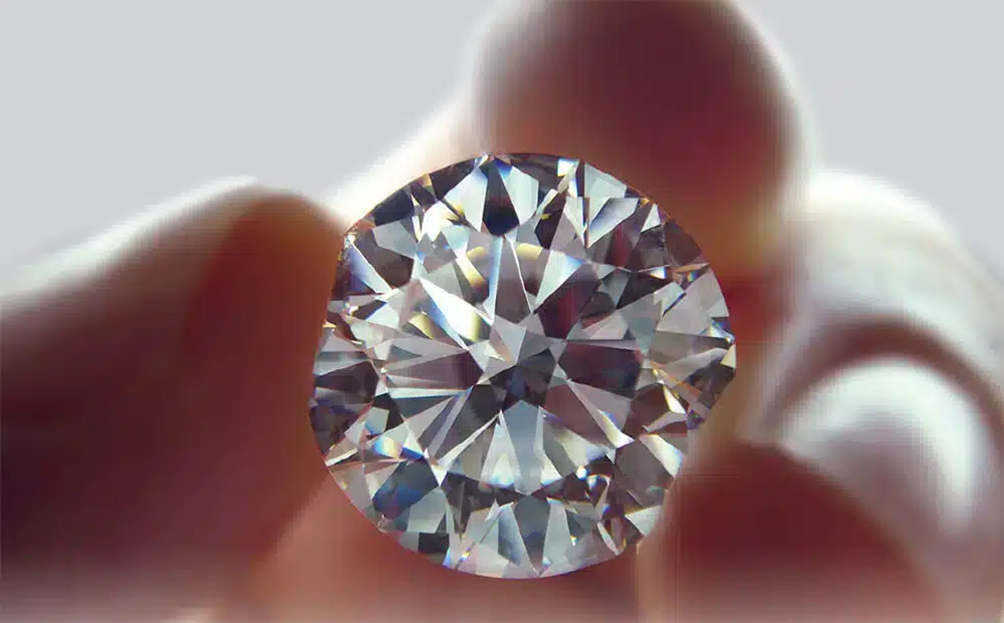

Diamond classification
After the diamond cutting process and before being sold loose or set in jewelry, diamonds are generally subjected to gemological institutes such as the IGI for quality assessment. Four main factors are taken into consideration when judging the quality and value of a diamond. They are the 4Cs of the diamond: Carat Weight, Color, Clarity and Cut.
IGI examines each diamond using cutting-edge technology to determine natural, lab-grown or simulant origin. Experienced graduate gemologists conduct further evaluations under controlled conditions, detailing the relevant gemological characteristics according to the most rigorous international system.
Classification of Diamonds
After the diamond cutting process and before being sold loose or set in jewelry, diamonds are generally subjected to gemological institutes such as the IGI for quality assessment. Four main factors are taken into consideration when judging the quality and value of a diamond. They are the 4Cs of the diamond: Carat Weight, Color, Clarity and Cut.
IGI examines each diamond using state-of-the-art technology to determine its natural, lab-grown or simulated origin. Experienced graduate gemologists conduct further evaluations under controlled conditions, detailing the relevant gemological characteristics according to the most rigorous international system.
Uniquely Yours
Your diamond is exceptional and distinctive. No two diamonds are alike. Yet all diamonds have some characteristics in common that allow experts to compare and evaluate them.
The name diamond comes from the ancient Greek “adamas” which means unbreakable, wild and invincible. Diamonds have been prized as gemstones ever since they were discovered. In our modern age the word “diamond” continues to evoke images of elegance, style and glamour.
The name diamond comes from the ancient Greek “adamas” which means unbreakable, wild and invincible. Diamonds have been prized as gemstones ever since they were discovered. In our modern age the word “diamond” continues to evoke images of elegance, style and glamour.
The diamond lab grown shines and dazzles. The diamond symbolizes purity and strength. And the story of your diamond is uniquely yours.
We thank the IGI Institute in Antwerp for the informative and photographic material made available.
We look forward to being by your side in this special time. Contact us today!
